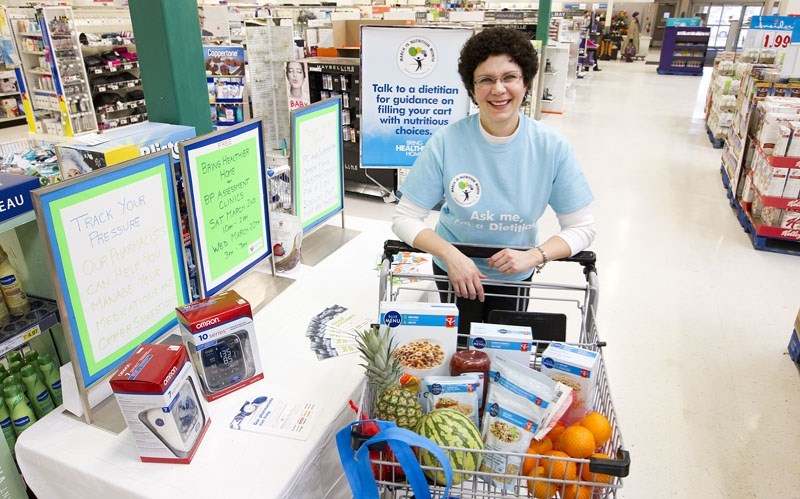The grocery aisle can be a confusing place these days: quinoa-this, omega-3-that; ancient grains, what does that mean? And how to read the nutrition labels on product packaging? It can be enough to make you pitch the grocery list and send you running to the frozen entrée section.
If this sounds familiar, take heart, you’re not alone. According to a 2012 poll by the Dietitians of Canada, up to 75 per cent of Canadians struggle to make healthier food choices in grocery stores, even though most (67 per cent) prepare a food list before food shopping and some 37 per cent plan meals in advance.
“Healthy eating does start at the grocery store,” says Edmonton-based registered dietitian Leslie Howe. “A grocery shopping strategy can save you time and money, and make healthy eating a little easier.”
The Dietitians of Canada are calling this year’s national campaign Best Food Forward: Plan Shop Cook Enjoy.
In St. Albert, dietitian Debra McLennan is helping Superstore customers at a couple of events – deciphering labels, talking about trends and making sense of terms like gluten-free, whole grain and slow food. She also answers that burning question, “what do I do with this kale?” McLennan agrees it can be daunting to keep track of it all, so she likes to keep it simple.
“We just want to help make the grocery cart healthier, so fill it with vegetables and fruit, whole grains, milk products, lean fresh meats and meat alternatives like legumes,” says McLennan. “If your pantry is well-stocked, you’ll eat healthier.”
Did you know that the major food groups are represented around the perimeter of any grocery store? That’s where you’ll find produce, dairy, meats and baked goods. The inner aisles hold the processed foods, often laden with fat, sodium and preservatives. Dietitians advise to take that grocery list and stick to it, so as to avoid being distracted by tempting end-of-aisle displays and the not-so-good-for-you stuff positioned near the checkouts.
As for understanding those complicated nutrition labels, McLennan says she recommends a five-and-15 rule of thumb. If a product has less than five per cent of an ingredient, that’s not much; anything over 15 per cent is a lot.
“That can apply to sodium, fat, fibre, anything,” adds McLennan.
When you have time to cook from scratch, make extra, dietitians advise – good for a future supper or work lunches.
“A slow cooker is a great tool – it cooks for you while you’re away at work or school,” McLennan said.
And when time is very short, McLennan points to nutritious convenience foods like frozen fruit, pre-chopped vegetables and ready-to-go salads. The Internet, too, can give consumers what they’re asking for: online menu planning tools, recipes—even online videos to help shop for healthy food.
Other grocery stores in the city, including Save On Food and Canada Safeway, offer dietitian-led nutrition tours when interest warrants. Heather McColl, registered dietitian with Save On Foods, says school classes, new moms, scout groups and even sports teams regularly book tours at the store, covering nutrition basics as well as answering questions geared to their specialized interest.
“The tours are interactive – it’s a great awareness tool for anyone to learn about healthy eating, and to take charge of their grocery shopping experience,” says McColl.




